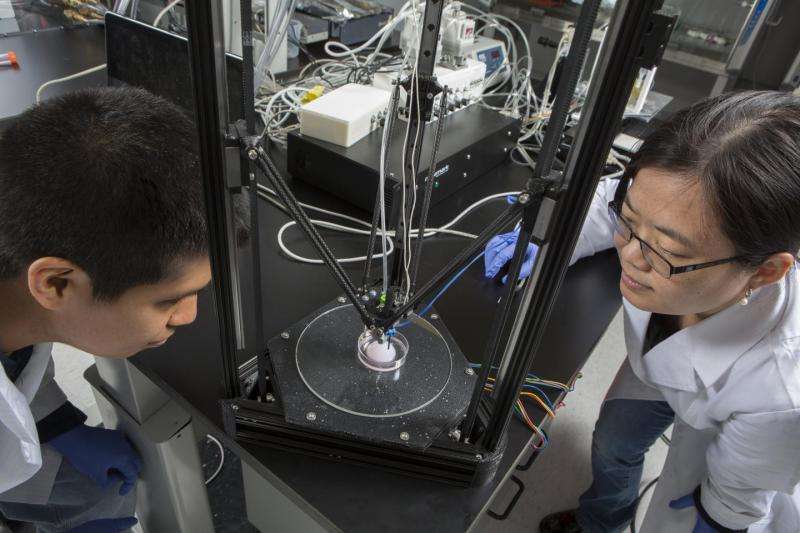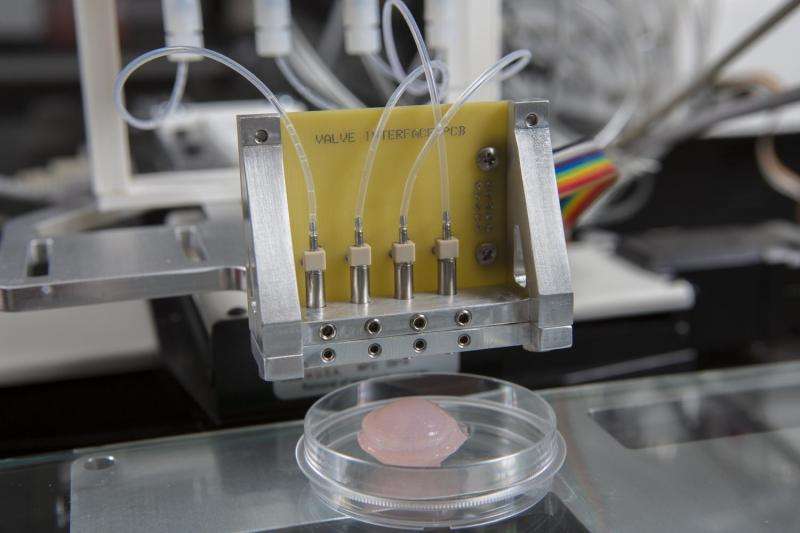3-D printing process could help treat incurable diseases

A team of Binghamton University researchers are creating a 3-D printing process to build implantable tissues and organs to treat otherwise incurable diseases.
Biomedical engineering professors Kaiming Ye and Sha Jin are focusing on potential diabetes treatment options by trying to "grow" a functioning three-dimensional model of a pancreas and creating new cells that produce insulin.
According to Ye, the most efficient way to grow cells is on a 3D scale because our cell cultures float in a 3D environment. The problem with growing cells in a Petri dish is that all these essential building blocks of life are only two-dimensional.
By creating this new printing technology, researchers can arrange the cells in a way that resembles the conditions of real human organs. Specifically for patients with diabetes, new personalized cells called islets can be created to keep blood sugars at a regulated level.
"The most efficient treatment for diabetes is islet transplantations," Ye said. "However, because of the scarcity of donors, islet transplantations are not available to the majority of diabetic patients."
A few steps must be taken before a 3D model of a pancreas or any other part of the anatomy can be created. First, the printed organ must be alive. To address this, Jin's lab created a vascular system with vessels that pump blood, sending oxygen and nutrients to the cells. Secondly, scientists are still looking for ways to produce pure islet cells. Jin's lab is working on solving this medical dilemma by using cells that can differentiate themselves into any cell type in the body. These cells are known as "pluripotent stem cells" and are believed to have the capability to become islet cells.

With help from a $300,000 grant from the National Science Foundation, Ye hopes to increase the number of potential donors for islet cell transplants.
The need for this personalized medical treatment is becoming increasingly apparent, Ye said.
"The number of diabetes patients goes up every year, so the prevalence of diabetes is a big problem," Ye said. "This research could provide an unlimited cell source for islet transplantation."

















